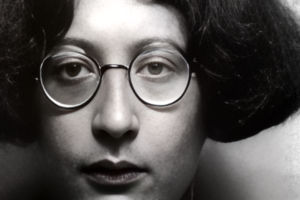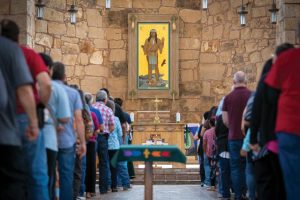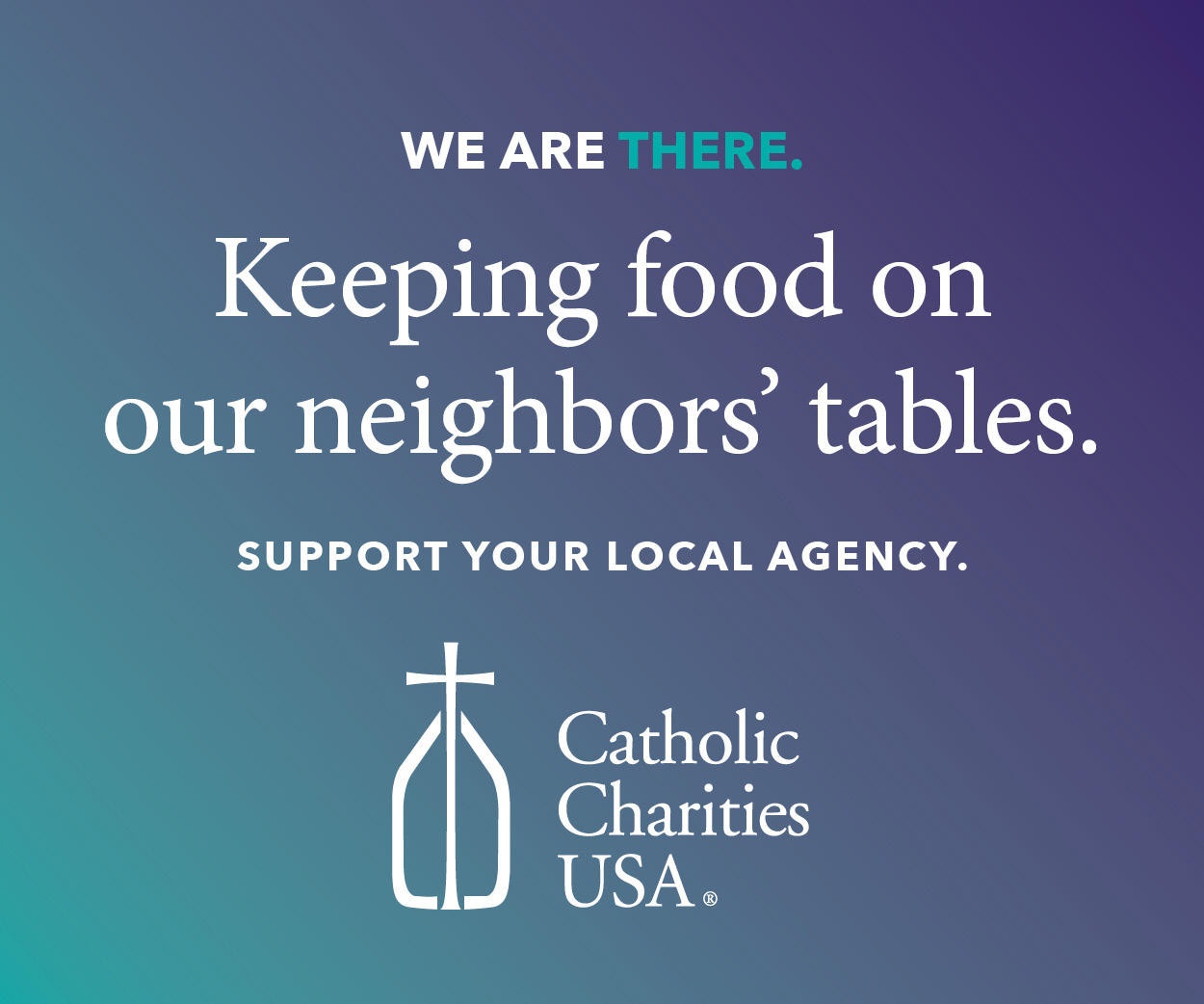Desperate to become parents, some Catholics are looking at science to help them conceive—despite church teaching against the process.
When Erik Zimmerman comes home at night, his 9-year-old son Oscar asks him how the day went and what he had for lunch.
Oscar is a compassionate boy who’s good at sports, says Zimmerman, who lives in Cincinnati. Indeed, the proud father says, “He’s passionate about golf, and he’s been playing competitively for three years now.”
Jacob and Noah Frederickson, growing up outside of Madison, Wisconsin are already developing their distinct personalities, says their mother Kristin.
Seven-year-old Jacob “wants to be an actor. He plays every sport possible. He likes to be busy and keeps me on my toes,” she says. “Noah just turned 4, and he’s coming into his own. He has always been a little more reserved, more thoughtful. He sticks with things a little longer than Jacob.”
Their father, Phil, adds that they’re typical kids: “healthy, active, and bratty at times.”
Oscar, Jacob, and Noah were each conceived through in vitro fertilization (IVF). Their mother’s egg was fertilized with their father’s sperm in a laboratory, and the resulting embryo was transferred into their mother’s uterus. The embryo implanted, and, in the normal course of things, a baby was born nine months later.
Since 1978, when Louise Brown of England became the first child born through in vitro fertilization, some 4 million people have come into the world with the help of the process. Now, every year in the United States, one out of every 100 babies is born with the help of IVF.
Yet in using IVF the parents of Oscar, Jacob, and Noah—all Catholics—were going against the teachings of their church. Since 1987 the Vatican has been on record that most procedures resulting in the conception of a child outside of the act of sex between a married couple are morally wrong.
“I’m sure there are people out there who chose not to do IVF because they are afraid of going to hell,” says Kristin Frederickson. “I don’t believe that.
“I have a lot of faith, and I believe that God created the people who created the science.”
Like many Catholic couples, Christina and Alex Burnett of Orlando, Florida went into marriage fully expecting to have children. So they were shocked to discover that they were unable to conceive.
“We felt like: Did we do something wrong?” says Alex.
So the couple opted for IVF and asked friends and family to pray for them. But they didn’t consult a Catholic priest. They knew the church was against the process, and, as is the case with many couples in this position, they didn’t want to be told “no.”
The Burnetts went through IVF 11 times at a total cost of more than $100,000, with no success.
Now they’re hoping to adopt, and, again, they’re asking friends and family for prayers.
“I don’t believe in God any less,” Alex says. “He has a different plan for us.”
Pastoral counseling
Among world religions, the Catholic Church, along with some conservative Protestant denominations, takes the strongest stance against the use of IVF.
Yet Franciscan Brother Daniel P. Sulmasy doesn’t start there when he counsels infertile couples.
“You’ve got to begin with a recognition of the pain of infertility,” says Sulmasy, a medical doctor and professor of medicine and ethics at the University of Chicago. “It is something of biblical proportions. Think of the Sarah and Elizabeth stories out of the Bible. There’s a deep desire that we have as human beings to bring forth our own out of our own flesh.”
Then Sulmasy explains to the couple the many treatments that are acceptable under church teaching.
“Too often couples get on an assembly line,” he says. “They try to get pregnant. Can’t. They go to the OB/GYN, and he sends them to the fertility doctor. [And after a few tests] the fertility doctor says, ‘Well, here’s in vitro fertilization.’ They don’t sit back and think about this.”
Treatments acceptable to the Catholic Church include the use of drugs to increase the number of eggs produced, surgery to eliminate blockages in the husband’s or wife’s body, and gamete intra-fallopian transfer (GIFT), which is similar to in vitro fertilization but not as efficient. In GIFT the wife’s eggs and husband’s sperm are injected together into the woman’s fallopian tubes in the hope that an embryo will result.
Sulmasy suggests adoption as another alternative. “Obviously, it’s not as satisfying from a biological point of view as having your own child,” he says. “But it may be a more deeply loving act.”
Also, Sulmasy says, it’s important for the couple to examine their desire for a child thoughtfully and soberly.
“There is this sense that some people have that it’s necessary that they have a biological child to be a complete person,” he says. “They need to recognize that their value as a person is not connected to their ability to do anything biologically.”
Only after this long conversation does Sulmasy discuss with the couple the church’s opposition to IVF.
That opposition, according to Sulmasy and other ethicists, centers on three issues: the sanctity of life, the centrality of the sex act in human conception, and the threat that some in vitro procedures can pose to the bond of marriage and family.
Of ethics and embryos
Catholic teaching states that human life begins at the moment of conception, when the egg and sperm unite to form an embryo. In IVF that union occurs in a petri dish. Usually several embryos are created in this way. A doctor then transfers one or more of them to a woman’s uterus. The others are frozen for possible future use or destroyed.
For the church the destruction or demise of an embryo during the IVF process is the unnatural ending of a human life, says Father Thomas Nairn, the senior director for ethics at the St. Louis-based Catholic Hospital Association of the United States.
Dignitas Personae (The Dignity of a Person), an instruction published by the Vatican in 2008, asserts that all of the ways of indefinitely storing or disposing of an embryo are morally wrong. That, Nairn explains, is because all threaten or actually end the life of the embryo.
Marie Hilliard, director of bioethics and public policy at the National Catholic Bioethics Center in Philadelphia, says IVF “treats children as a commodity and property of their parents, who can consent to their destruction at will.”
Official church opposition to IVF was spelled out by the Vatican in its 1987 instruction Donum Vitae (The Gift of Life). Having a baby outside of the act of sexual intercourse reduces the child to “an object of scientific technology,” rather than the result of the interaction of God and a couple’s love, the document says. A wife and husband should “cooperate as servants and not as masters in the work of the Creator who is Love,” according to the document.
With such language “the church is sort of putting the sex act on a pedestal,” contends Oscar’s mother, Julie Irwin Zimmerman. “It seems to me that the people writing these teachings are totally unfamiliar with the lives of the average married Catholics.”
Nairn says, “In some ways the church does put the sex act on a pedestal, seeing it as a sacrament. Ultimately the Vatican’s understanding of sexuality is ideal, but it’s an ideal the Vatican wants Catholics to strive for and get to.”
The church also believes that IVF can endanger family life when “third parties” become involved through donor sperm or eggs or as surrogate mothers, Nairn says.
“It can weaken the bond of marriage and family,” he says. “Most basically, the church believes that the use of a third-party sperm or ovum, even if done for good intentions, breaks down the partnership of husband and wife in the creating of the child.”
Adoption, on the other hand, is “the rescue of a child and the placing of that child in a familial situation for its continued nurturing,” Nairn says.
He adds, “As far as the Vatican is concerned, in adoption the focus is on the need of the child, and in IVF the focus is on the desire of a parent to have a child.”
Also deemed morally wrong by the church is the use of science to evaluate, select, and reject embryos, and any attempt to manipulate the process to determine the characteristics of children to be born.
“The beginning,” says Sulmasy, “is the drive for the baby, and then it’s the drive for the perfect baby.
“Rather than being open to a child as a gift, it turns into manufacturing. It becomes goal-driven, and we are taking into our own hands the creation of the human being as opposed to accepting human beings as free gifts.”
Independent study
In A Spiritual Companion to Infertility (ACTA) Zimmerman writes that she and her husband were originally opposed to IVF but eventually went with the procedure because it was their only option.
“Our decision to pursue in vitro fertilization was the culmination of a long process of discernment. . . . Even after we changed our minds about in vitro, we still decided that we weren’t comfortable with donor eggs or sperm, nor would we discard excess embryos.”
Zimmerman says she wrote her book because it was the sort of resource she and Erik needed but couldn’t find. The church provided little help.
“I felt we were on our own,” she says, noting that the subject of infertility and possible treatments was never raised during their pre-Cana preparation for marriage. So, in addition to talking with three priests, she conducted her own study of church teaching and documents on IVF.
“Part of this was selfish—I really wanted this,” she says. “Part of it was: Can we do this morally?”
Zimmerman came away from her study believing that the church is inconsistent in its teaching—strongly opposed, for instance, to IVF but not opposed to GIFT. (The church isn’t opposed to GIFT because no embryos are created in a lab and the sex act is still central to the process. Sperm is collected in a perforated condom which allows the couple to remain open to natural conception.)
The church, she says, sometimes gets its facts wrong. For example, she says Dignitas Personae states that a third of women who attempt artificial procreation are successful when, in fact, it’s 50 percent or more of all women, and up to 86 percent of women under 35. (The Society for Assisted Reproductive Technologies reported in 2007 that the percentage of live births resulting from fresh non-donor embryo transfers in the United States in 2007 was 36 percent.)
“When they get basic facts wrong,” she says, “it made me suspicious. The more I read, the less I trusted the people writing these documents and making these decisions.”
Through IVF treatments, the couple created 12 embryos, all of which were eventually transferred into Zimmerman’s uterus during four in vitro cycles.
The result was Oscar.
“Even with IVF, conception was still a mystery and a miracle,” Zimmerman says. “I felt God’s grace was still at work in it.”
A different path
Other Catholic couples faced with infertility choose not to opt for IVF.
Kathleen Morroni and Katherine McKenna both took similar roads to the Pope Paul VI Institute for the Study of Human Reproduction in Omaha. The results were similar: Mary Joy Morroni was born in March 2009. Tess McKenna came into the world in May 2010.
The institute, which offers fertility treatments acceptable within the norms of church teaching, was founded in 1985 by Dr. Thomas W. Hilgers.
The Creighton Model Fertility Care System, which Hilgers developed, involves the meticulous tracking of a woman’s reproductive health as an aid in achieving—or avoiding—pregnancy. It’s used at the institute in conjunction with NaPro Technology, another Hilgers creation, which employs medical and surgical procedures to improve the possibility of pregnancy.
While suffering four miscarriages over a 10-year period, Morroni and her husband, Greg, saw seven or more fertility and endocrine specialists. “They all recommended in vitro fertilization and said it was our only hope for having children,” she says.
The Morronis, who live in Aurora, Colorado, “researched and learned the church’s teachings on life,” Kathleen says. “We consulted with many priests, including a medical ethicist in the church. Once we understood that in vitro fertilization creates many fertilized eggs—real people—to get one or two live births, it was not an option to us.”
Instead they sought treatment at the institute, and, two surgeries later, Morroni became pregnant with Mary Joy.
“Our infertility,” she says, “has been a blessing in many ways. We are more pro-life because of our experiences. We learned the virtues of patience, wisdom, understanding, fortitude, knowledge, piety, and fear of the Lord during our wait for Mary Joy.”
In 2007, when McKenna and her husband, Thomas, were living in Omaha (they now live in Glen Ellyn, Illinois), she became pregnant but soon began bleeding. The first doctor she consulted wanted to end the pregnancy, so McKenna consulted a physician at the institute.
That doctor worked closely with McKenna in an effort to avoid a miscarriage but was unsuccessful. After a series of tests at the institute, the couple got pregnant again and again miscarried. Following diagnostic surgery and further treatment, the McKennas tried again—and Tess came into their lives.
If nothing else had worked, would they have tried IVF?
“No,” says McKenna, who grew up in a pro-life family and knew the Vatican’s opposition to the process. “We would have adopted. I have family members who are adopted. It’s such a beautiful process.”
Children welcomed
It wasn’t until a couple weeks before his grandson Noah’s baptism that Dave Zweifel, Kristin Frederickson’s father, learned of the church’s opposition to IVF.
“I was pretty dumbfounded,” says Zweifel, who is not Catholic. “If anything, it struck me as out of character for the church because it’s so pro-life.” IVF, he says, “brings a lot of joy for a couple who would be childless. It seems to me the church should encourage that.
“I even wondered if the church assumed [Noah] shouldn’t be baptized.”
No fear there, says Nairn, the Catholic Hospital Association ethicist.
“The church would not condemn the child. The church would see IVF as a bad means to a good end,” he says. “The Vatican, in my belief, sees that motivation of people to have a child as commendable. But, even though the motivation is commendable, the Vatican still sees the act of in vitro as leading to the commodification of the child.”
With its ban on birth control and opposition to abortion, the Catholic Church is known for its emphasis on children. Parenthood is spotlighted as an important vocation. During the wedding ceremony, couples are specifically asked if they will welcome children.
“The operative word there is ‘welcome,’ ” says Nairn. “The fact that we ought to welcome children doesn’t mean that we can demand children.”
He notes that, according to the Vatican document Donum Vitae, “The child is not an object to which one has a right, nor can he be considered as an object of ownership; rather, a child is a gift.”
Families’ concerns do not end with conception and birth through IVF.
Ophelia Blanchard (not her real name) is not ashamed that her daughter Kim was conceived through IVF. But she lives in northeastern Texas, a conservative bastion of the nation. “We consider ourselves a very Catholic family. But I worry, if anybody at our church ever finds out, how that would affect the way we are perceived at church.”
Even though she has no qualms with IVF, Blanchard has one concern. “As my daughter gets older and asks about her origins, how do I explain the church’s position to her? I really want to be truthful. I don’t want to have to explain why the Vatican doesn’t like what we did.”
This article appeared in the October 2011 issue of U.S. Catholic (Vol. 76, No. 10, pages 32-36).
Image: Erin Drewitz














Add comment